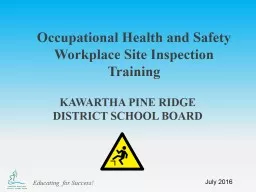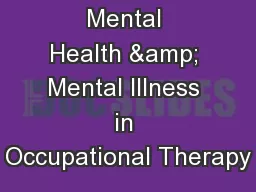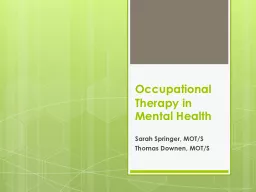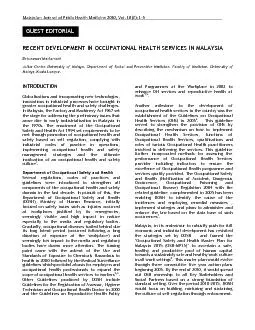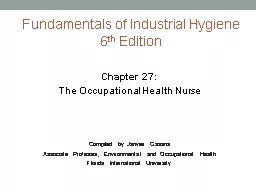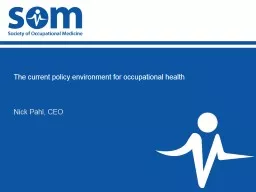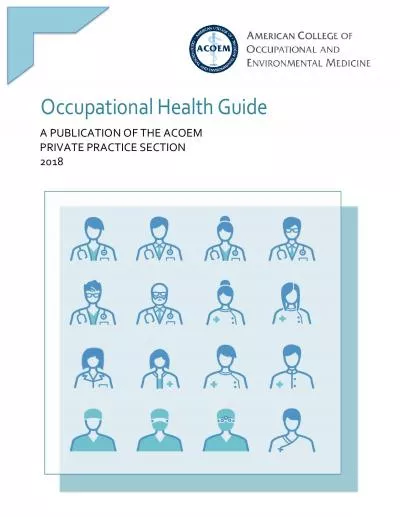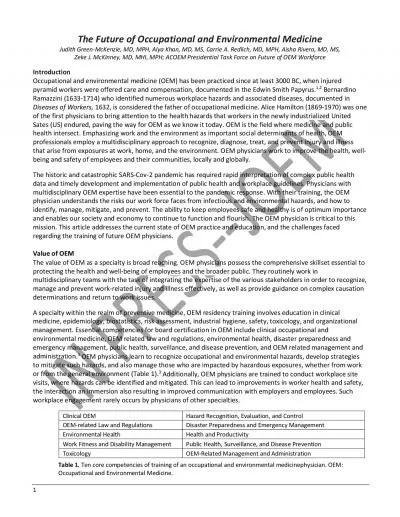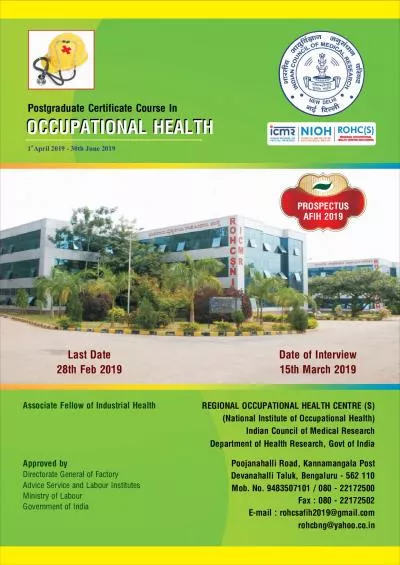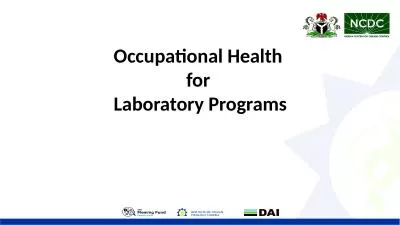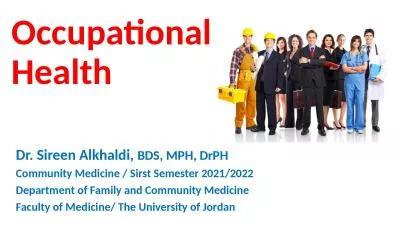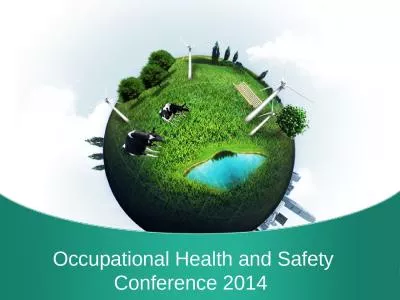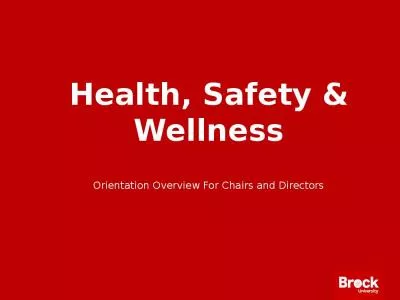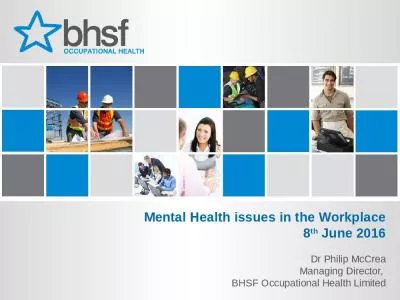PPT-Occupational Health and Safety
Author : luanne-stotts | Published Date : 2018-02-12
Workplace Site Inspection Training KAWARTHA PINE RIDGE DISTRICT SCHOOL BOARD Ju ly 2016 Preamble This training power point presentation is intended to assist inspection
Presentation Embed Code
Download Presentation
Download Presentation The PPT/PDF document "Occupational Health and Safety" is the property of its rightful owner. Permission is granted to download and print the materials on this website for personal, non-commercial use only, and to display it on your personal computer provided you do not modify the materials and that you retain all copyright notices contained in the materials. By downloading content from our website, you accept the terms of this agreement.
Occupational Health and Safety: Transcript
Download Rules Of Document
"Occupational Health and Safety"The content belongs to its owner. You may download and print it for personal use, without modification, and keep all copyright notices. By downloading, you agree to these terms.
Related Documents

